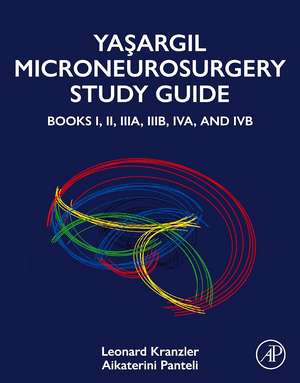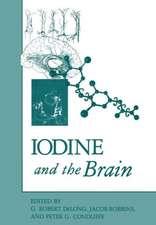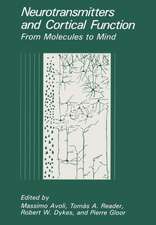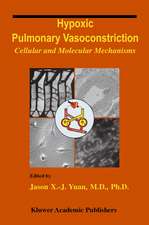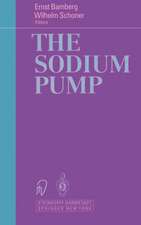Yasargil Microneurosurgery Study Guide: Books I, II, IIIA, IIIB, IVA, and IVB
Autor Leonard Kranzler, Aikaterini Pantelien Limba Engleză Paperback – 22 mai 2023
- Provides a fill-in the blanks format structure of question and answers to test microneurosurgery learning
- Discusses pathology, physiology, imaging and treatment protocols in neurosurgery
- Details acronyms to help provide memory cues
- Allows readers to test their knowledge of neurosurgical anatomy, techniques, equipment, and more
- Ideal for both neurosurgeons, neurosurgical residents, and others working in the field of microneurosurgery
Preț: 682.26 lei
Preț vechi: 885.16 lei
-23% Nou
Puncte Express: 1023
Preț estimativ în valută:
130.57€ • 141.78$ • 109.68£
130.57€ • 141.78$ • 109.68£
Carte tipărită la comandă
Livrare economică 15-29 aprilie
Livrare express 15-21 martie pentru 97.42 lei
Preluare comenzi: 021 569.72.76
Specificații
ISBN-13: 9780443186363
ISBN-10: 0443186367
Pagini: 406
Dimensiuni: 216 x 276 x 24 mm
Greutate: 1.1 kg
Editura: ELSEVIER SCIENCE
ISBN-10: 0443186367
Pagini: 406
Dimensiuni: 216 x 276 x 24 mm
Greutate: 1.1 kg
Editura: ELSEVIER SCIENCE
Cuprins
I. Microsurgical Anatomy of the Basal Cisterns and Vessels of the Brain, Diagnostic Studies, General Operative Techniques and Pathological Considerations of the Intracranial Aneurysms
1. Operative neurosurgery; 2. Diagnostic studies; 3. General operative techniques; 4. Anesthesia for Microsurgical procedures in Neurosurgery; 5. Pathological considerations
II. Clinical Considerations, Surgery of the Intracranial Aneurysms and Results 1 Clinical considerations
6. Clinical considerations; 7. Internal Carotid Artery Aneurysms; 8. Middle Cerebral Artery Aneurysms; 9. Anterior Cerebral and Anterior Communicating Artery Aneurysms; 10. Vertebrobasilar Aneurysms; 11. Giant Intracranial Aneurysms; 12. Multiple Aneurysms; 13. Unoperated Cases; 14. Complications of Aneurysm Surgery; 15. Addendum; 16. Final Comments
III. Arteriovenous Malformation (AVM) of the Brain, History, Embryology, Pathological Considerations, Hemodynamics, Diagnostic Studies, Microsurgical Anatomy
17. History; 18. Embryology; 19. Pathological considerations; 20. Hemodynamics; 21. Diagnosis and Follow-up of patients with cerebral AVM using Doppler ultrasound; 22. Neuroradiological Evaluation; 23. Microsurgical Anatomy of the Brain; 24. Cortical Blood Vessels of the Human Brain; 25. Anatomy of the Calcarine Sulcus
IV. AVM of the Brain, Clinical Considerations, General and Special Operative Techniques, Surgical Results, Nonoperated Cases, Cavernous and Venous Angiomas, Neuroanesthesia
26. Anatomical Location of AVMs from the Surgical Viewpoint; 27. Clinical Considerations; 28. Surgical Concerns; 29. Special Surgical Considerations; 30. Summary of Operative Results; 31. Children with AVM; 32. Nonoperated Patients with AVM; 33. Venous, Cavernous and Occult Angiomas; 34. Final Comments AVMs; 35. Anesthesia in the Surgery of Cerebrovascular Malformations
V. CNS Tumors: Surgical Anatomy, Neuropathology, Neuroradiology, Neurophysiology, Clinical Considerations, Operability, Treatment Options
36. Anatomy; 37. Neuropathology; 38. Neuroradiology; 39. Neurophysiology; 40. Clinical Considerations – Operability
VI. Microsurgery of CNS Tumors: Instrumentation and Equipment, Laboratory Training, Surgical Approaches, Strategies, Tactics and Techniques, Surgery and Results of Extrinsic and Intrinsic Tumors, Interventional Neuroradiology, Neuroanesthesia, Complications
41. Instrumentation and Equipment; 42. Laboratory Training; 43. Surgical Approaches; 44. Strategies, Tactics, and Techniques; 45. Acoustic Neurinomas; 46. Less Common Neurinomas: Orbital, Oculomotor, Trigeminal, Facial, Glossopharyngeal, Accessory, and Hypoglossal; 47. Glomus Jugulare Tumors; 48. Meningiomas; 49. Hemangiopericytoma; 50. Chondromas; 51. Chordomas; 52. Epidermoid and Dermoid Tumors; 53. Intracranial Lipoma; 54. Transcranial Surgery for Large Pituitary Adenomas; 55. Craniopharyngiomas; 56. Optic Gliomas; 57. Esthesioneuroblastoma (Olfactory Neuroblastoma); 58. Arachnoid Cysts; 59. Neocerebral and Neocerebellar Tumors; 60. Limbic and Paralimbic Tumors; 61. Midline Tumors (Corpus Callosum, Septum Pellucidum, Basal Ganglia, Diencephalon, and Brainstem); 62. Intraventricular Tumors; 63. Pineal Area Tumors; 64. Patient Population and Outcome from Individual Glioma Groups; 65. Malignant Transformation; 66. Embryonal CNS Tumors; 67. Primary CNS Non-Hodgkin Lymphoma and Primary Intracranial Sarcoma; 68. Germ Cell Tumors; 69. Vascular Tumors; 70. Cerebral Metastases; 71. Interventional Neuroradiology in the Management of CNS Tumors; 72. Neuroanesthesia for Microsurgery of CNS Tumors; 73. Summary: Whole Series; 74. Summary: Childhood Tumors; 75. Intra- and Postoperative Complications; 76. Final Remarks
1. Operative neurosurgery; 2. Diagnostic studies; 3. General operative techniques; 4. Anesthesia for Microsurgical procedures in Neurosurgery; 5. Pathological considerations
II. Clinical Considerations, Surgery of the Intracranial Aneurysms and Results 1 Clinical considerations
6. Clinical considerations; 7. Internal Carotid Artery Aneurysms; 8. Middle Cerebral Artery Aneurysms; 9. Anterior Cerebral and Anterior Communicating Artery Aneurysms; 10. Vertebrobasilar Aneurysms; 11. Giant Intracranial Aneurysms; 12. Multiple Aneurysms; 13. Unoperated Cases; 14. Complications of Aneurysm Surgery; 15. Addendum; 16. Final Comments
III. Arteriovenous Malformation (AVM) of the Brain, History, Embryology, Pathological Considerations, Hemodynamics, Diagnostic Studies, Microsurgical Anatomy
17. History; 18. Embryology; 19. Pathological considerations; 20. Hemodynamics; 21. Diagnosis and Follow-up of patients with cerebral AVM using Doppler ultrasound; 22. Neuroradiological Evaluation; 23. Microsurgical Anatomy of the Brain; 24. Cortical Blood Vessels of the Human Brain; 25. Anatomy of the Calcarine Sulcus
IV. AVM of the Brain, Clinical Considerations, General and Special Operative Techniques, Surgical Results, Nonoperated Cases, Cavernous and Venous Angiomas, Neuroanesthesia
26. Anatomical Location of AVMs from the Surgical Viewpoint; 27. Clinical Considerations; 28. Surgical Concerns; 29. Special Surgical Considerations; 30. Summary of Operative Results; 31. Children with AVM; 32. Nonoperated Patients with AVM; 33. Venous, Cavernous and Occult Angiomas; 34. Final Comments AVMs; 35. Anesthesia in the Surgery of Cerebrovascular Malformations
V. CNS Tumors: Surgical Anatomy, Neuropathology, Neuroradiology, Neurophysiology, Clinical Considerations, Operability, Treatment Options
36. Anatomy; 37. Neuropathology; 38. Neuroradiology; 39. Neurophysiology; 40. Clinical Considerations – Operability
VI. Microsurgery of CNS Tumors: Instrumentation and Equipment, Laboratory Training, Surgical Approaches, Strategies, Tactics and Techniques, Surgery and Results of Extrinsic and Intrinsic Tumors, Interventional Neuroradiology, Neuroanesthesia, Complications
41. Instrumentation and Equipment; 42. Laboratory Training; 43. Surgical Approaches; 44. Strategies, Tactics, and Techniques; 45. Acoustic Neurinomas; 46. Less Common Neurinomas: Orbital, Oculomotor, Trigeminal, Facial, Glossopharyngeal, Accessory, and Hypoglossal; 47. Glomus Jugulare Tumors; 48. Meningiomas; 49. Hemangiopericytoma; 50. Chondromas; 51. Chordomas; 52. Epidermoid and Dermoid Tumors; 53. Intracranial Lipoma; 54. Transcranial Surgery for Large Pituitary Adenomas; 55. Craniopharyngiomas; 56. Optic Gliomas; 57. Esthesioneuroblastoma (Olfactory Neuroblastoma); 58. Arachnoid Cysts; 59. Neocerebral and Neocerebellar Tumors; 60. Limbic and Paralimbic Tumors; 61. Midline Tumors (Corpus Callosum, Septum Pellucidum, Basal Ganglia, Diencephalon, and Brainstem); 62. Intraventricular Tumors; 63. Pineal Area Tumors; 64. Patient Population and Outcome from Individual Glioma Groups; 65. Malignant Transformation; 66. Embryonal CNS Tumors; 67. Primary CNS Non-Hodgkin Lymphoma and Primary Intracranial Sarcoma; 68. Germ Cell Tumors; 69. Vascular Tumors; 70. Cerebral Metastases; 71. Interventional Neuroradiology in the Management of CNS Tumors; 72. Neuroanesthesia for Microsurgery of CNS Tumors; 73. Summary: Whole Series; 74. Summary: Childhood Tumors; 75. Intra- and Postoperative Complications; 76. Final Remarks
